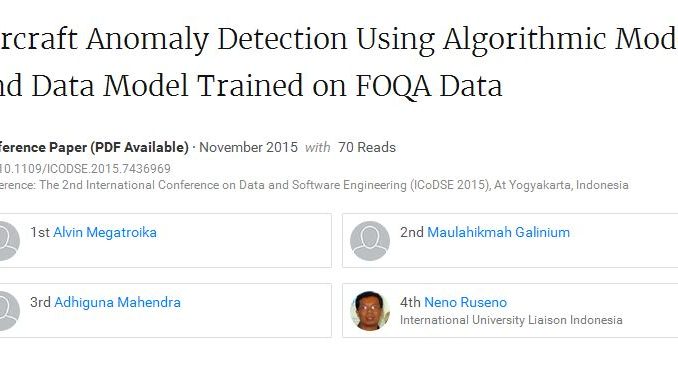
Abstract: Two models of anomaly detection are put to use in detecting anomalies in aircraft operation. Self-Organizing Map Neural Network (SOM NN) is used from the culture of algorithmic modeling and One-Class Support Vector Machine (SVM) is used from the culture of data modeling. The goal of the research is to find anomalies within the data of aircraft operation or otherwise known as Flight Operations Quality Assurance (FOQA) data, and to find out which model performs better. SOM NN found 8800 data points of anomalies over 69 flights and One-Class SVM found 40392 data points of anomalies over 651 flights. The anomalies are divided into three categories: performance anomaly, sensor anomaly, and miscellaneous anomaly, each happened because of different causes. It is concluded that both models could detect anomalies within FOQA data and the One-Class SVM outperforms SOM NN in number of anomalies found, however in runtime length, SOM NN performs better, the best choice of model is then concluded according to computing resource availability since SOM NN could still be improved without an expensive resource compared to One-Class SVM
